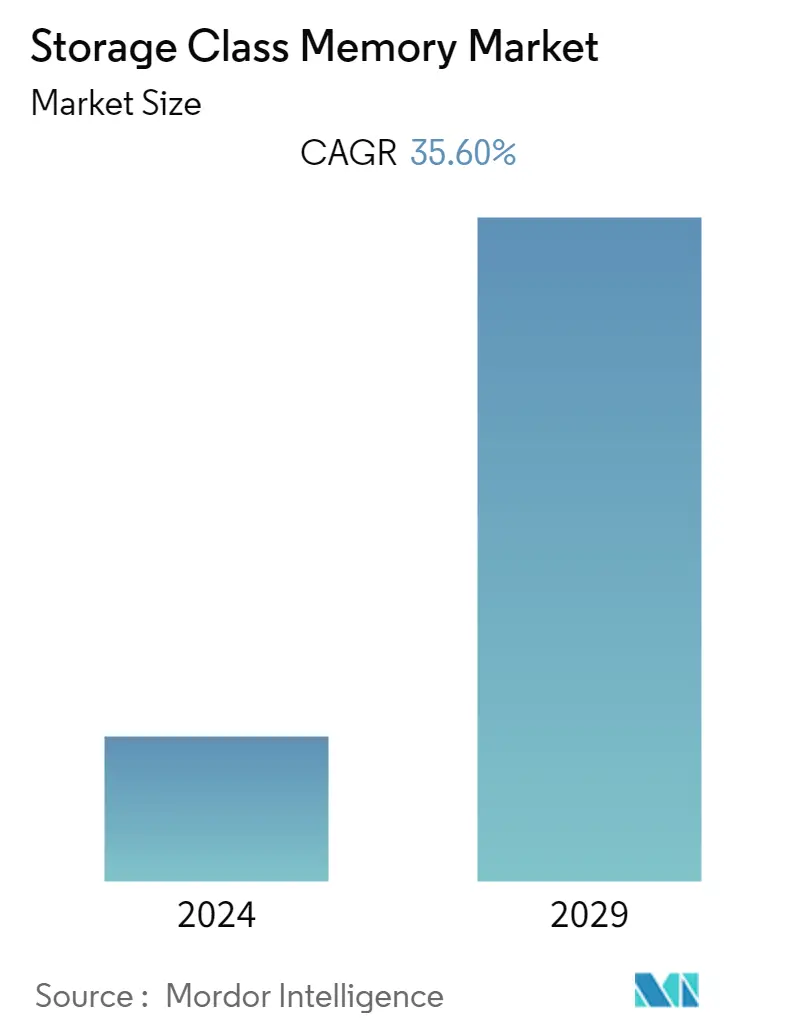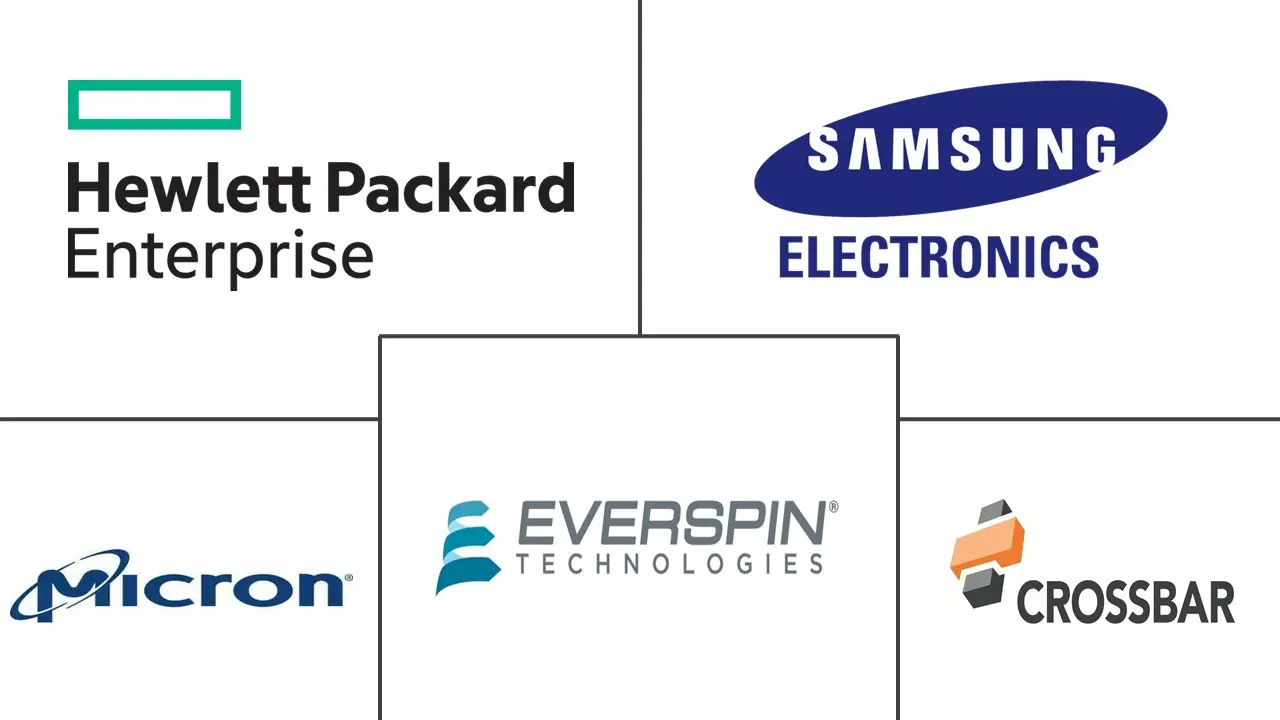Market Size of Storage Class Memory Industry

| Study Period | 2019 - 2029 |
| Base Year For Estimation | 2023 |
| CAGR | 35.60 % |
| Fastest Growing Market | North America |
| Largest Market | North America |
| Market Concentration | High |
Major Players
*Disclaimer: Major Players sorted in no particular order |
Need a report that reflects how COVID-19 has impacted this market and its growth?
Storage Class Memory Market Analysis
The Storage Class Memory (SCM) Market is projected to register a CAGR of 35.6% during the forecast period. SCM fills the specific performance and reliability gap in the memory hierarchy. Its use cases range from high-performance storage cache to a replacement for flash for faster storage media due to its addressability at the block and byte levels.
- Storage Class Memory (SCM) is a critical component in the transition from rotating mechanical storage, such as disk drives, to solid-state, non-volatile RAM. As a result, SCM promises to deliver higher-performance and more energy-efficient solutions than existing SLC/MLC NAND flash products.
- Storage Class Memory (SCM) is faster for reading and writing operations than NAND flash. Furthermore, it has higher endurance properties due to being significantly more resistant to data rewrites. SCM features include advantages over NAND flash and a lower cost per GB when compared to DRAM.
- Furthermore, the ability to perform at near-memory speeds, as well as ultra-high endurance and persistence through power outages, makes SCM suitable for latency-sensitive applications such as financial trading applications, analytics, direct-attached storage applications, and databases.
- The demand for in-memory processing increasingly used in Big Data applications, like interactive database queries, has prompted Intel and other chipmakers to boost memory bandwidth. When running analytics workloads, such as the Spark-based cluster computing framework, Intel claims queries run eight times faster on persistent memory than on DRAM storage combinations.
- The rise of application containers in data centers also has boosted requirements for persistent memory in recent years. Hence, vendors present in the market ecosystem are emphasizing the advantages of larger persistent memory tiers, including increased CPU and server utilization and the faster delivery of distributed applications.
- Moving forward, when digital data is stored in non-volatile memory, it is essential to have a mechanism for detecting and correcting specific errors. Error correction code (ECC) offers to encode data so that a decoder can identify and correct errors in the data.
- Many end-user industries across different nations were affected by the pandemic resulting in the shutdown of various business operations. For instance, the introduction of lockdowns in India indicated shutting down all sectors and activities. These lockdown implementations lead to a massive impact on every industry, with the majority of businesses suffering losses. According to Intel, the increased need for virtualized desktop infrastructure and virtualized storage solutions is driving demand for its storage and memory products in the data center. The need to enhance and accelerate storage and memory capabilities for the two application types has come in response to the large number of workers who moved to home offices and a rise in the use of digital resources that have been prompted by the COVID-19 pandemic. Intel's Non-Volatile Memory Solutions Group saw first-quarter revenue grow 46% year-over-year to USD 1.3 billion.
